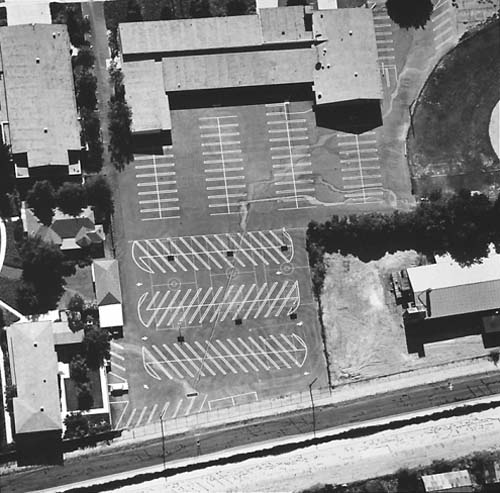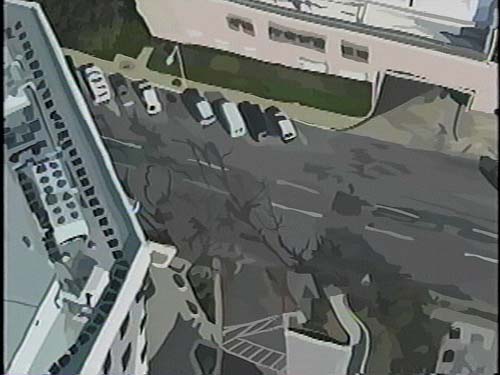
|
Lorna Mills and Sally McKay
Digital Media Tree this blog's archive OVVLvverk Lorna Mills: Artworks / Persona Volare / contact Sally McKay: GIFS / cv and contact |
View current page
...more recent posts
Artist Tom Moody, of Digital Media Tree art blog fame, has also been making some fun music. He did the excellent soundtrack for my Robot Landscapes installation in the spring. Tom has posted all his mp3s. Take a listen. I am partial to "Phil's Revenge" myself.

...[Philip] Monk proposed that, for the new art in Toronto at least, while representation can lead to action rather than to the mere contemplation allowed by formalist modernism, it is nevertheless only women artists who, in Monk's estimation, have shown a genuine and authoritative acquisition of representation and all that this slippery term means. [...] "The lines of difference," Monk wrote, "…are really between a passive resignation and melancholy despair, pessimism, nihilism and decadence on the one hand and the sense of the possibility of action on the other." Men, Monk insists, have given themselves over to a romantic yearning for aesthetic unity, to dreams of a fallen wholeness, to a longing for heroism; men he says, are basically expressionists. It is women who hold sway over meaningful representation." ...from "Reading Philip Monk: Analysing a complex and controversial theory about Canadian art and artists," by Gary Michael Dault in Canadian Art, Winter/December 1984, Volume 1, Number 2, p.70-73. To read the whole article, go to the Canadian Art websiteWow...cool, eh? So controversial. I wonder, is this when Philip Monk allegedly jumped the shark? I applaud Canadian Art for putting up these old articles, very helpful to anyone like me obsessed with recent Canadian art history. I spent the 2nd half of the 80s in art school in Nova Scotia. I remember Philip Monk came to give a lecture and showed slides of paintings by Joanne Tod. I liked them. I was painting at the time, and being told by staff and fellow students in no uncertain terms that I (in my self-referrential irony) was making "boy" art, and that I had to "realise that women make a different kind of work." I can still feel the flush of weird inarticulated frustration that came over me in the face of these statements. And it was kind of true, at least in the context of the painting department at my school. The only people who related to my projects were guys: faculty like Gary Neil Kenedy, who was supportive and bemused, and fellow students who were themselves tied up in knots about the impossiblity of meaning, the death of painting, and such spirals of despair. Monk's statement (as filtered through Dault) sounds preposterous, but I feel like I know something of what he meant. While venturing into ironic or self-referential territory got me slaps on the wrist from other females (the laden scrawl, "Clever girl" written in the comment book of my graduating show still stings), I was still less boxed in, and had more generative scope to play with signs and signifiers than my male fellows.
I just realised this blog is over one year old! I've changed the header image in celebration. Here's a link to my first ever post (Nov. 18, 2003).
François Lachapelle of the Canada Council has posted an open letter to Instant Coffee's email listings that responds to protest against the C.C.'s proposed changes. This quote jumps out: "The Council has lost its capacity to be generous and is therefore less able to support the 'development of the practice', the purpose of the current program as stated 40 years ago." (I've reposted the whole letter in comments below)
To over simplifiy, the Canada Council was the result of two things: the Massey Report in 1951, and six years later the deus-ex-machina-type appearance of a $53 million endowment from the Killam and Dunn estates. A great source for this history (besides [plug!] Andrew Paterson's thorough timeline in Money Value Art) is George Woodcock's Strange Bedfellows, The State and the Arts in Canada, published in 1985 by Douglas and MacIntyre. Below are some quotes from Woodcock that provide context for the issue at hand.
When the Massey Commission began its enquiries in the spring of 1946, there was no world of Canadian arts and letters of the kind that existed in European Countries and the United States, or, for that matter, of the kind that has since developed in Canada. [...] The situation was partly due to the lack of interest on the part of most Canadians , still barely out of the pioneer age, in art. But even more it was due to the lack of the kind of infrastructure which transforms a scattering of people working in virtual isolation into a really functioning artistic and literary world that reaches out to audiences both urban and rural and in all regions. (p. 46-47)
In 1949 the average budget which the National Gallery could devote to purchases of all kinds, of which the work of living Canadian artists was only a part, was a mere $32,000, and other public galleries were faced by similar limitations of scope. At the same time there existed only a rudimentary network of private galleries, and by no means did all of these attempt to sell the works of living painters. (p. 49)
[The Massey Report] showed genuine wisdom in its assessment of the great cultural lacks of Canada in the late 1940s, and the scanty resources that existed to meet them. What impressed me perhaps more than anything else was the way the commission created its own bow wave of interest, not only looking into the needs, but making people think of them, so that by the time of the report's publication the idea that the community had a responsibility towards its arts and artists was accepted without serious opposition. (p. 50)
I have often heard it said that Vincent Massey was an elitist, and that the report was an elitist document. And so, if you think in such barren terms, it probably was. But in the cultural desert of Canada at that time a group of men and women was needed who could act the elitist role and decide what seemed to be good for the arts and suggest what was good for the arts was good for the country. (p. 51)
The upsurge in the arts that characterized the later 1950s was already beginning to stir, and it ran parallel to a postwar economic resurgence which made Canadians look more confidently and more adventurously on the future than they had done at any time since the 1880s, when the building of the Canadian Pacific Railway symbolized the emergence of a pan-Canadian economy which, then also, was accompanied by modest but genuine upsurges in poetry and the visual arts [...] There is no doubt that the success of the Arts Council in Britain encouraged not only the artists but also the politicians, who saw a lively artistic community as a national ornament...(p. 54)
In the speech to the throne on 8 January 1957, the establishment of the Canada Council was first proposed to Parliament, and shortly afterward St. Laurent himself introduced the bill establishing it, and in doing so laid down a principle that, despite the manoeuvres of later Liberal politicians, has mainly guided the council's actions, though lately with dwindling confidence. "Government should, I feel, support the cultural development of the nation, but not attemp to control it." [...] The council, formalized when royal assent was given to the Canada Council Act on 28 March, 1957, was established to "foster and promote the study and enjoyment of, and the production of works in the arts, humanities, and social sciences," and a measure of independence was guaranteed. The council was to set its own policies and make its own decisions within the terms of the act, reporting to Parliament through an appropriate minister... (p. 56)
The history of the Canada Council has been one of finding its way through a changing artistic situation, which has involved over the decades a moving away from imperial models, and a need to cope with the kinds of pressures, often indirectly applied but not for that reason any less irksome, that emerge when politicians confuse art with politics and talk of the democratization of culture, or when bureaucrats attempt to impose on the arts the attitudes of the marketplace and to treat the arts as "cultural industries." (p. 57)

Ed Ruscha, Parking Lots (6), 1967/99, downloaded from Daniel Templon

Video still from the film "Waking Life" (2001) by Richard Linklater
In 1960, American conceptual/pop artist Ed Ruscha finished art school in LA. That same year, Texan filmmaker Richard Linklater was born. In 1967, the year that I was born, Ruscha made the unpreposessing art book, Thirtyfour Parking Lots in Los Angeles. In 198-something, I first encountered Ruscha's art books while attending art school at NSCAD. My initial reaction to "Thirtyfour Parking Lots in Los Angeles" was a flush of relief. I recently had a similar experience watching Richard Linklater's film "Waking Life."
Hal Foster: "...Ruscha has dampened his art in a way that nonetheless allows it to be distinctive: a deadpan-ness - funny, desolate, sometimes both - is conveyed in his homely shots of solitary gas stations or aerial images of empty parking lots..."
Richard Linkater: "One thing we’ve all learned is that the corporate father has no interest in you as an individual. So if people could be aware of that, and stay on their toes, adapt … that’s a good thing."
Metropolitain Museum of Art's Timeline of Art History: "Ruscha's books paid tribute to and slyly parodied the romantic vision of the road epitomized by writers and artists such as Jack Kerouac and Robert Frank, while also subverting the rapidly expanding market for what the artist described as "limited edition, individual, hand processed photos."